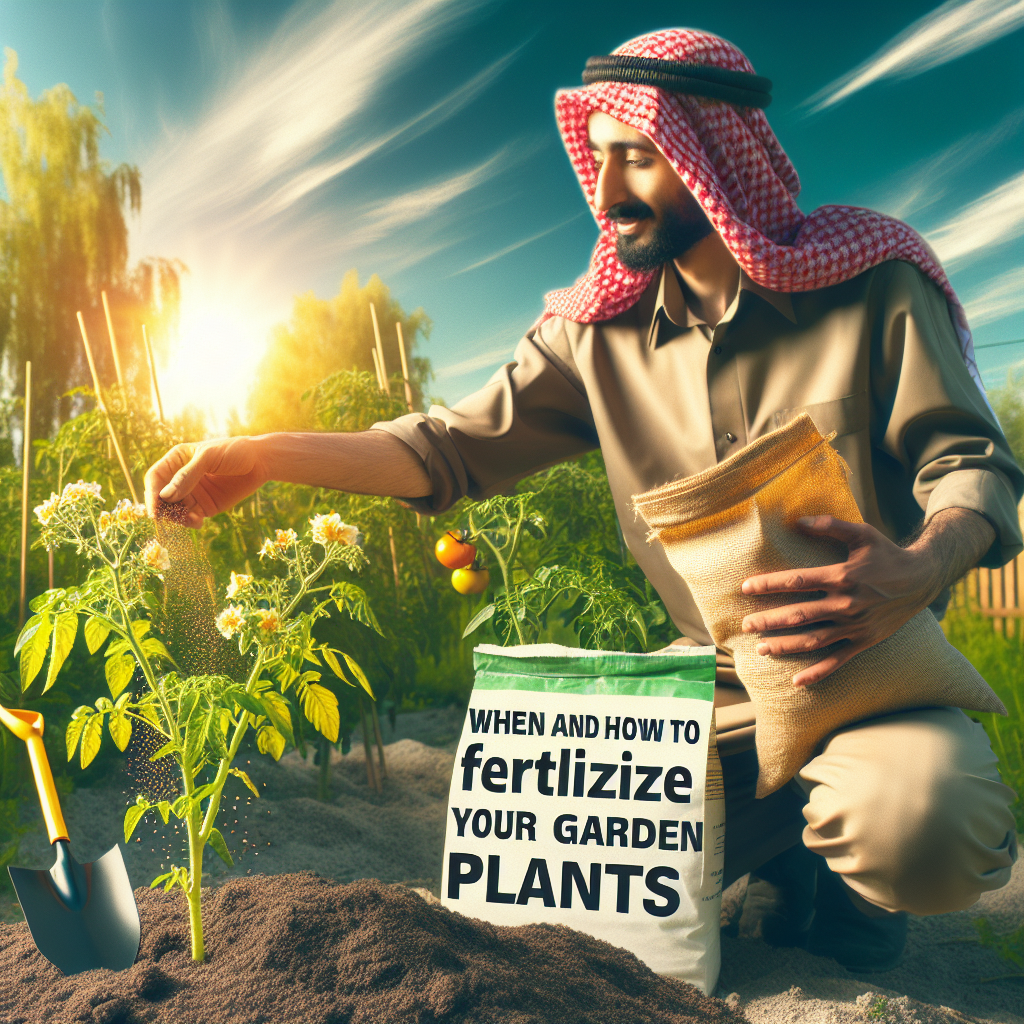When and How to Fertilize Your Garden Plants
As a gardener, you understand that the success of your plants doesn’t only hinge on water and sunlight—nutrition plays a crucial role. Fertilizing your garden is akin to feeding it; you’re providing essential nutrients that the soil might not naturally have in abundance. However, timing, and the right method, can be the difference between flourishing flora and a withered patch. Let’s dig into the best practices for fertilizing your garden plants effectively.
Know Your Seasons: Timing Is Key
Spring: The Awakening Phase
As the frost retreats and buds start to appear, your garden is waking up from its winter slumber. This is a prime time to apply fertilizer to give your plants a head start. The Old Farmer’s Almanac advises that early spring is perfect for fertilizing perennials as they prepare for a season of growth.
Summer: Consistency Is Crucial
Through the heat of summer, plants are in full swing, and some, especially vegetables and flowering plants, might need a mid-season boost. This is especially true for fast-growing plants and those producing fruits and flowers that deplete resources quickly.
Fall: Preparing for Rest
Come autumn, it’s wise to prepare your plants for the coming cold. A late-fall fertilizer application can help perennials store energy for winter. However, be cautious as to not promote new growth that can’t withstand the chilly weather.
Winter: Generally a No-Go
Most garden plants are dormant during winter, so they aren’t actively seeking nutrients. Over-fertilizing at this time can lead to wastage or environmental damage.
The Method to the Madness: Applying Fertilizers
Soil Testing: Know Before You Grow
Before you even begin to fertilize, know what your soil has plenty of and what it lacks. Conducting a soil test—which you can do via home testing kits or by sending a sample to a local extension service—will tell you exactly what type of fertilizer your garden yearns for.
Choosing Your Fertilizer: The N-P-K Rundown
Fertilizers come labeled with an N-P-K ratio, indicating the amounts of Nitrogen (N), Phosphorus (P), and Potassium (K) they contain.
- N (Nitrogen): Promotes leafy growth.
- P (Phosphorus): Encourages root and flower development.
- K (Potassium): Strengthens overall plant health.
The soil test will guide you on the right ratio for your garden’s needs.
Organic vs. Synthetic: A Matter of Preference
Organic fertilizers, like compost or bone meal, release nutrients slowly and improve soil structure over time. On the other hand, synthetic fertilizers offer a quick nutrient fix. Whichever you choose, follow the application rates provided on the packaging.
Application Best Practices
- Methodical Measuring: Always use the recommended amount. More doesn’t mean better in the world of fertilizing and can harm your plants.
-
Root to Rise: Apply fertilizer near the roots, as this is where most plants absorb their nutrients. Specialty garden spreaders and hand tools can ensure even application.
-
Water Wisely: Fertilizers need moisture to work. Water your garden after applying granular fertilizer to help dissolve and distribute it.
-
Consistent Care: Consider using a slower-release formula or divide the recommended annual application over several smaller feedings to give your plants time to absorb the nutrients.
Watch for Warnings
Recognize the signs of over-fertilization, like yellowing leaves or stunted growth. If you notice these symptoms, try to flush the soil with water and avoid further fertilization for a while.
Seasonal Specialties: Tailor Your Technique
Lawn Luxury
Your grass is a hungry carpet that requires regular feedings, especially in spring and fall. Consider using a high-quality lawn fertilizer that is appropriate for the season and type of turf you have.
Vegetable Victory
Vegetable gardens have specific nutritional needs, often requiring a balanced N-P-K ratio. Be vigilant with your tomatoes and leafy greens—they’re notorious for their high nutrient demands.
Flowering Fanfare
Flowering plants are phosphorus-friendly since it aids in bloom development. A high-phosphorus fertilizer might be in order at the onset of the growing season to support those showy blossoms.
Wrapping It Up
Understanding when and how to fertilize your garden plants is an art that’s learned with time, research, and a bit of patience. It’s a balancing act between providing enough nutrition for growth without going overboard and causing damage. If you get it right, you’ll be rewarded with a thriving garden that’s not only a sight to behold but also a testament to the care and knowledge you’ve invested.
Now, roll up those sleeves and give your garden the feast it deserves—with moderation and mindfulness at each step. Your plants will thank you with vibrant colors, bountiful harvests, and an outdoor space that’s truly alive. And remember, even if you follow all the guidelines, nature often has its plans, so stay flexible, learn from your experiences, and continue to grow as a gardener.
Happy fertilizing!

